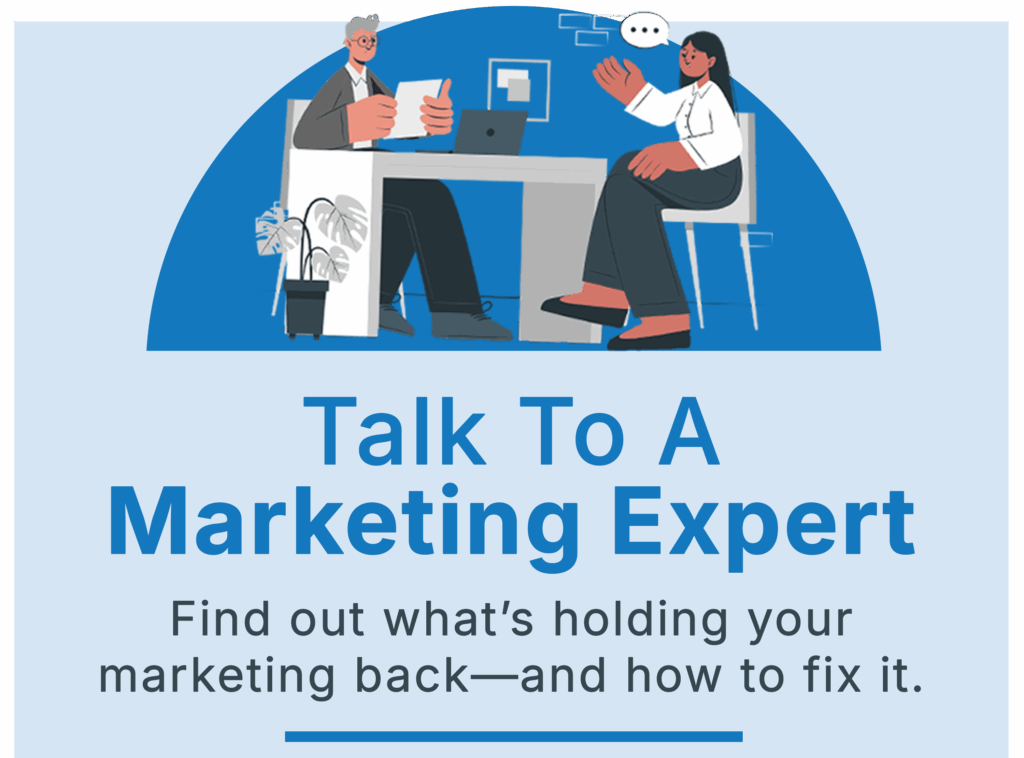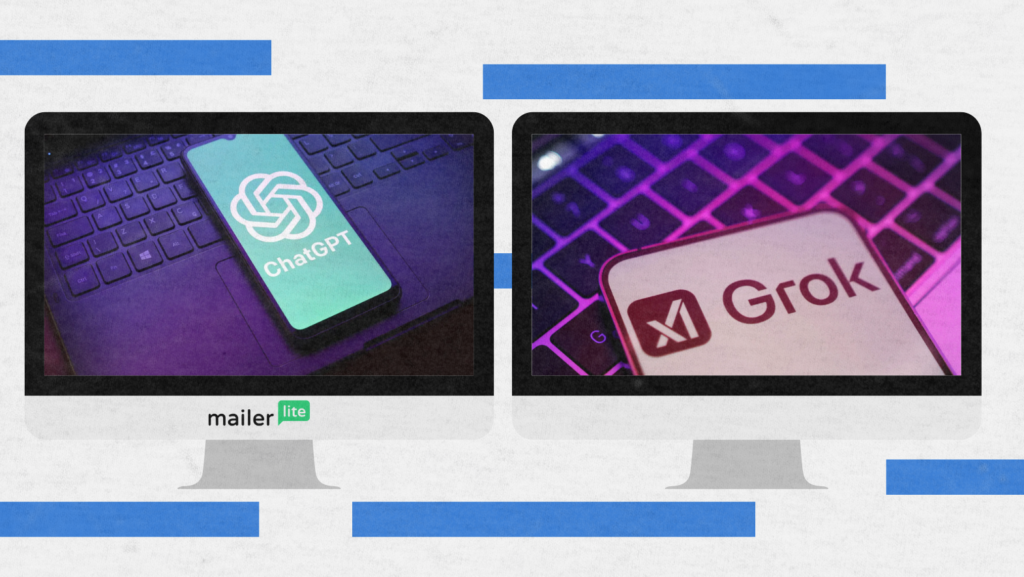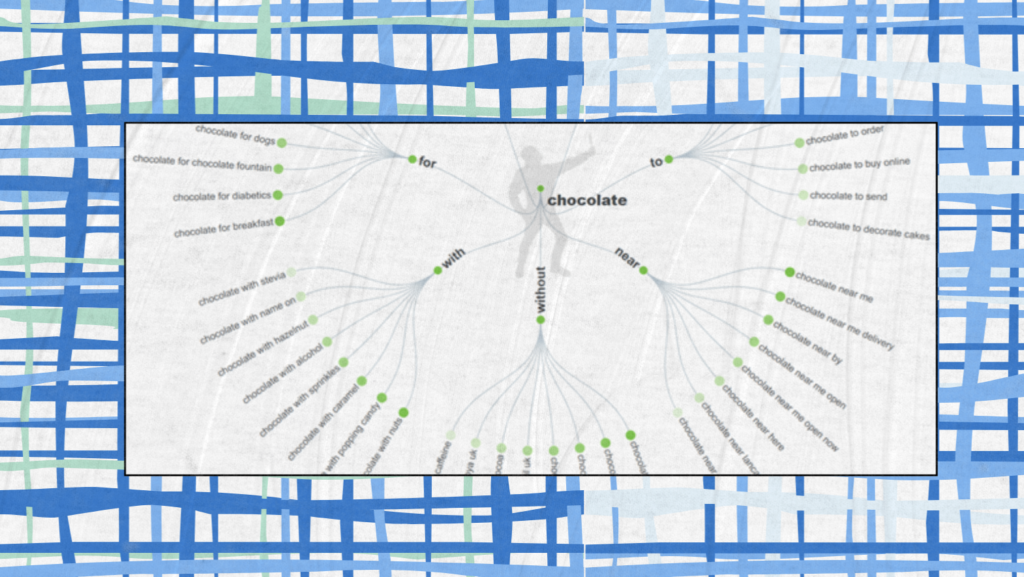In present times, diversity and inclusion are not just buzzwords used in organizations; they have become the base of any company that desires to survive, grow, and change with time. When you mix people from diverse backgrounds and with varied attitudes, then you can expect higher-quality ideas and better outcomes. But it is not only about the team having a mixture of people. Real inclusion means everyone feels they matter. Every voice counts.
The numbers back this up. Harvard Business Review found that diverse workforces are way more likely to grow their market share and break into new markets—45% and 70% more likely, to be exact. Lyra Health and Dinasti also show that companies with strong DEI (Diversity, Equity, and Inclusion) programs see employees who are more engaged, creative, and likely to stick around.
At LeadAdvisors, we see inclusive progress as something that starts with people, not policies. Through our BPO model, we enable the creation of global teams in companies that truly resemble our planet. It is a matter of providing everyone with an equal opportunity and creating a space where people feel connected, supported, and willing to give their best.
TL;DR: Why Diversity and Inclusion Matter
A truly inclusive workplace isn’t just about hiring people from different backgrounds—it’s about making sure everyone feels seen, respected, and valued. Research consistently shows that diversity drives innovation and stronger business outcomes.
Key takeaways:
- Diverse teams perform better: Harvard Business Review found they’re 70% more likely to enter new markets and 45% more likely to grow market share.
- Inclusion fuels innovation: When employees feel safe to speak up, they share better ideas and solve problems faster.
- Equity builds trust: Fair pay, equal opportunities, and representation at all levels turn company values into action.
- Belonging boosts retention: Teams that prioritize belonging see higher engagement, loyalty, and creativity.
- LeadAdvisors walks the talk: Through our global BPO model, we build multicultural teams that reflect real-world diversity and drive results.
When diversity and inclusion move from policy to practice, everyone benefits—from employees to leadership to clients.
What Diversity and Inclusion Really Mean (and Why They’re Not the Same)

We need to talk about diversity and inclusion. In fact, these words are frequently put together; however, they are not different facets of the same thing. Though they are quite close, each one performs a different function.
Diversity focuses on the question of who is there. It goes beyond the mere presence of people and is about the feelings of people after they have entered the organization. They need to feel secure, respected, and loved. It is a matter of ensuring that everyone can speak and that no one is left out or forgotten. Companies like WeWork and Lyra Health have advanced this concept; that is, if you create an environment where employees are comfortable sharing their ideas, you get better results and faster problem-solving.
On the other hand, inclusion is an entirely different concept. It is not only about those who are with us; it is about how everyone feels once they have come in the door. Everybody wants to feel safe, respected, and as if they really belong. It is the assurance that every single voice can be heard and that there is no one who feels left out or whose opinion is not taken into consideration. Companies like WeWork and Lyra Health have adopted this principle: when you create an environment in which people can speak up without any hesitation, you get better decisions and solve problems faster.
Not long ago, the term DEIB has been used more often. That stands for Diversity, Equity, Inclusion, and Belonging. Diversity is still about representation, but equity is there to make sure that everyone has the same opportunities. Belonging goes even further in terms of making a workplace where people can be themselves without any concern that they will be judged. All of that combined means more than just a workplace with diverse employees—it means a diverse workplace that actually feels human. That is the ultimate goal.
The Business Case for DEI: From Ethics to Competitive Advantage
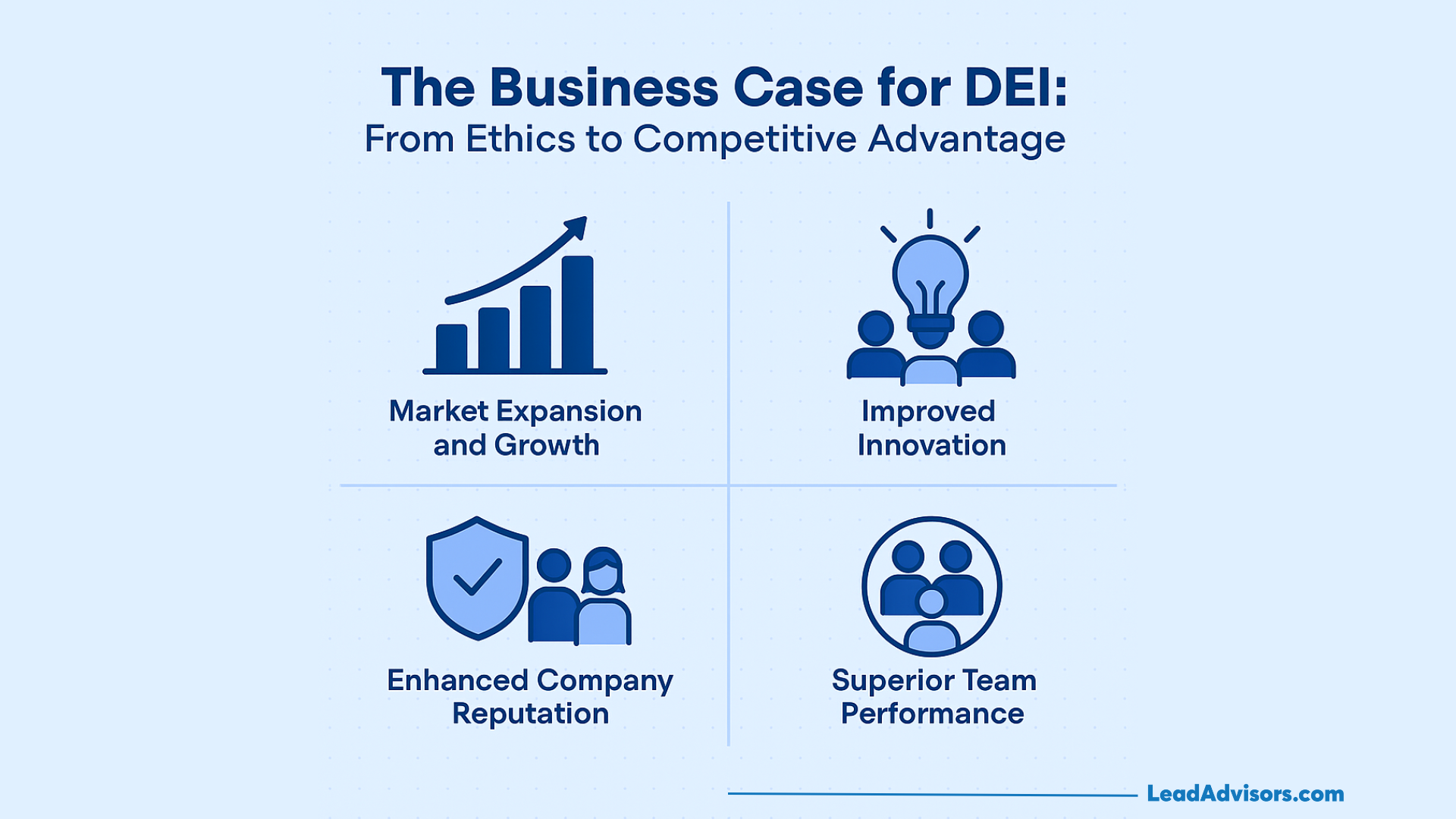
When companies get diversity and inclusion right, it’s not just the right thing to do—it actually gives them a real edge. Harvard Business Review found that diverse workforces are 70% more likely to break into new markets and 45% more likely to grow their market share. The good news, however, does not end here. Research data published by Lyra Health and Dinasti reveal that workplaces that emphasize the inclusion of different groups enjoy higher engagement levels among employees, receive more creative ideas from them, and experience longer tenure of employees.
Take the example of an underrepresented group that is combined with a variety of gender identities and different sexual orientations. This results in diverse perspectives. They can look at problems from different sides, which in turn leads to better decisions and smarter solutions. WeWork points out that when people bring their unique perspectives, innovation isn’t just a buzzword—the ideas are genuinely better.
However, it is not only about new concepts. In fact, diversity, equity, and inclusion have a major reputation boost for a company, plus they are a great source for attracting desirable talent. If the culture of your business is that of a welcoming, fair, and safe environment, people will take notice of that. HR leaders look for these signs when they’re planning out long-term strategies for workplace diversity.
Take BPO teams, for example. The most inclusive ones tend to outperform teams where everyone thinks and looks the same. For example, LeadAdvisors is a company whose multicultural teams connect with clients not only all over the country but also internationally because they are the ones who comprehend the different perspectives. As a result of a comfortable environment for the sharing of ideas, employees come up with better systems, are able to spot trends more quickly, and get better results. Bottom line? A more inclusive workplace model isn’t just the right thing to do. It’s smart business.
The Foundations of a Diverse and Inclusive Workplace
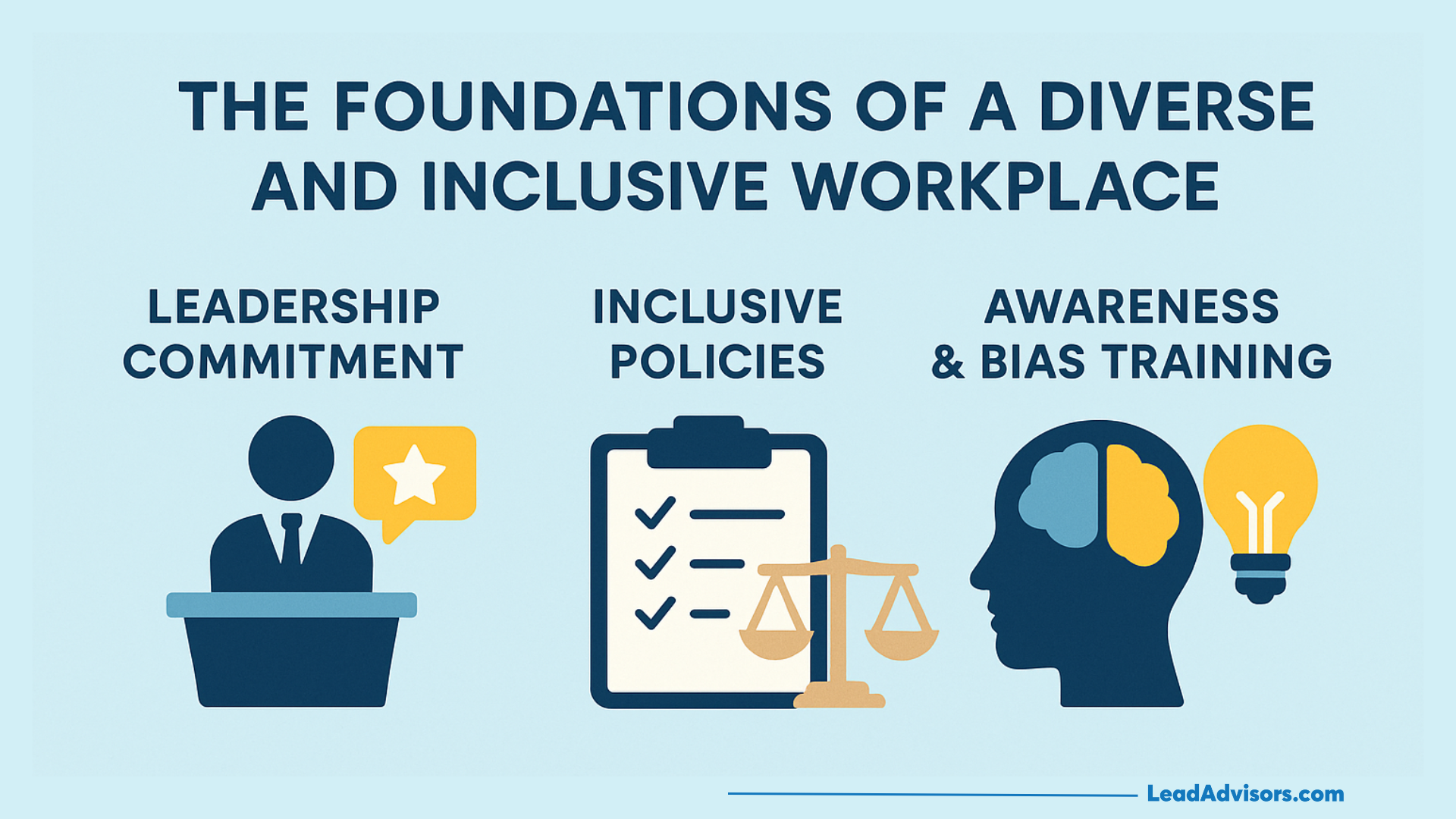
Creating a truly diverse and inclusive workplace requires a diversity effort of real depth—it is not merely a matter of good intentions. You need structure, strong leadership, and a commitment that never really stops.
Research from places like Harvard Business Review, Lyra Health, and Dinasti shows that the companies that actually succeed are the ones making DEI part of everything they do, not just an HR checkbox. Here are the three main pillars that really shape effective diversity, equity, and inclusion strategies.
1. Leadership Commitment and Visibility
The origin of everything is leadership. Executives who, among other things, show real concern for inclusivity, advocate for equal opportunities, and are very open about diversity goals, it turns out, are the ones that a whole company observes and gets influenced by. It really makes a difference.
According to Lyra Health and Dinasti, diverse personal experiences in decision-making roles create trust and keep the involvement, as well as the spirit of responsibility, of the entire workforce at a higher level. Firstup and Harvard Business Review conclude that when leaders communicate their progress and provide inclusion updates, workers acknowledge that their input is valued and they identify more with the organization’s values.
2. Inclusive Policies and Practices
Policies should not be seen just as a bunch of formalities—they are the backbone of people’s daily work experience. Those companies that commit themselves to doing fair hiring, equal promotion, and wages of equal value are indeed the ones who bring about real change. What is more, things like work-from-home opportunities, untiring accessibility, and providing the very best enabling for people with different kinds of abilities allow the company to be branded as caring for real people rather than just statistics.
Lyra Health and Filippatos Law both argue that inclusiveness cannot be a mere policy that resides in one document. It must influence the working environment of everyday so that all those who make up a team, regardless of their origin or personal characteristics, have the opportunity to present their talents. When the company’s policies are truly inclusive, it becomes clear from the way people treat each other, and not only from what the leadership says.
3. Awareness and Bias Training
True inclusion is inseparable from being aware. Holding discussions on the topics of unconscious bias and microaggressions on a regular basis is one of the ways through which different work groups obtain the qualities of empathy and self-awareness. The Harvard Business Review’s position is that quick, single-off intervention formats are ineffective; rather, ongoing learning, culture coaching, leadership, and receiving honest feedback are the main agents of habit change.
Filippatos Law also supports the same view of the issue—bias training is not just for publicity. It equips HR and managers with the necessary means to foster an environment of security, respect, and diversity through which a positive workplace culture is built. After staff become capable of discovering their own biases and setting the others straight in a polite manner, then mutual understanding and confidence increase. Workers get a higher degree of comfort in voicing their opinion, while, at the same time, the whole company becomes stronger and more innovative as a result.
10 Proven Ways to Champion Diversity and Inclusion (Curated from Top Industry Leaders)
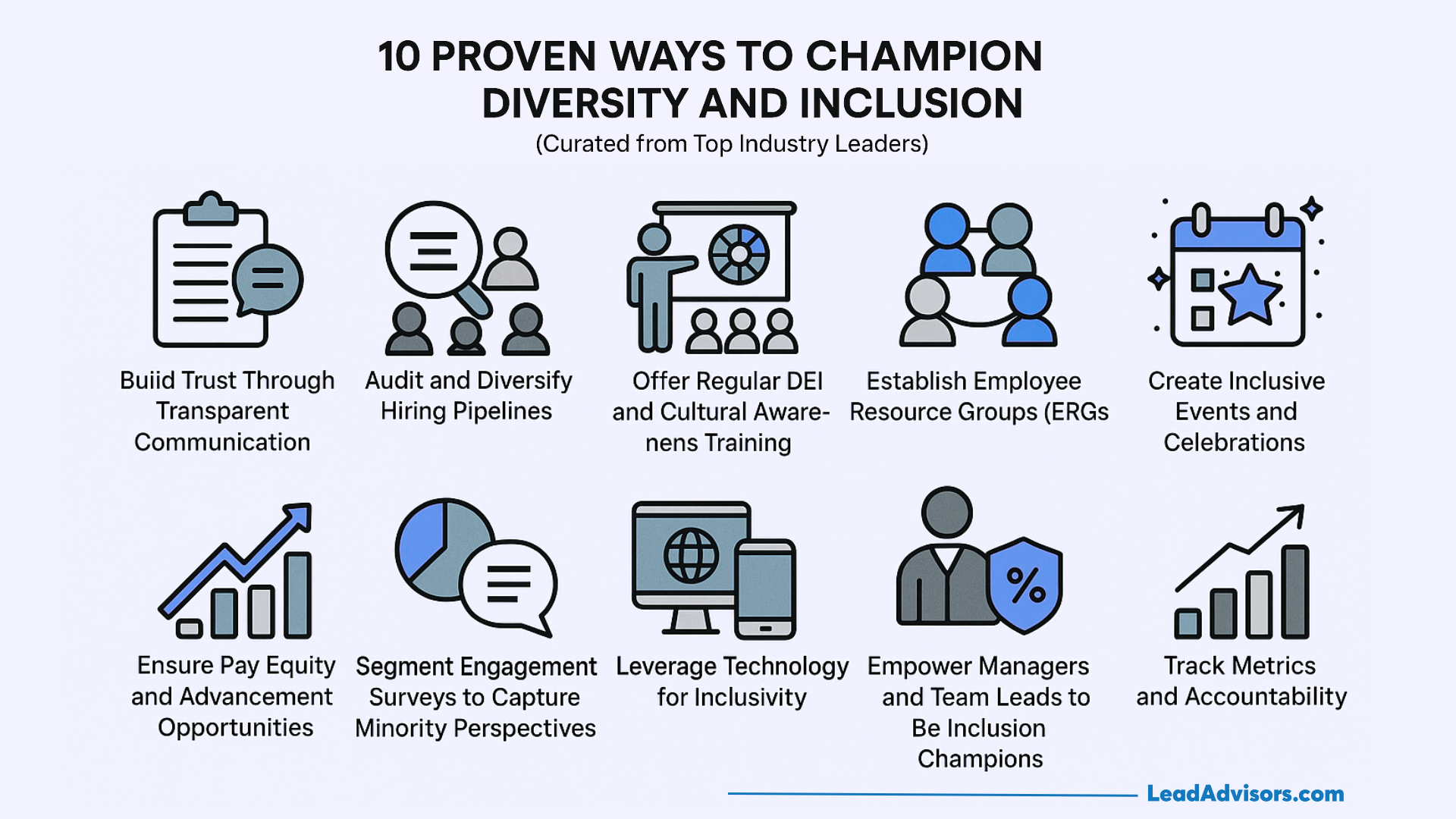
Let’s get real—building an inclusive environment isn’t something you can check off a list. It’s an ongoing effort that shapes how people work together, connect, and grow. Here’s how top companies actually make diversity and inclusion a part of daily life, backed up by research and real results.
1. Build Trust Through Transparent Communication
People want to know what’s happening. Share your DEI plans, progress, and even your setbacks. Be honest about where you stand. When leaders talk openly, employees feel respected. It shows you mean business about equal opportunity.
2. Audit and Diversify Hiring Pipelines
If you want a diverse team, you have to look in new places for a diverse talent pool. Train recruiters to spot their own biases and widen their search. It works: teams with different perspectives make smarter decisions and perform better.
3. Offer Regular DEI and Cultural Awareness Training
One-off workshops don’t cut it. Keep the conversation going with regular training—think sessions on unconscious bias, inclusive language, and how to spot microaggressions. Teams only thrive when everyone feels safe to speak up.
4. Establish Employee Resource Groups (ERGs)
Give people a space to connect, share, and push for change. ERGs help underrepresented voices get heard and make a real difference in company culture. According to the Wharton School of Business, active ERGs boost belonging and engagement, plain and simple.
5. Create Inclusive Events and Celebrations
Mark different holidays. Host events that highlight a range of backgrounds. These moments help everyone feel seen and appreciated, and they bring teams closer together. When you celebrate diversity, morale and engagement go up (Lyra Health, 2023).
6. Ensure Pay Equity and Advancement Opportunities
Lay out clear pay structures and promotion paths so everyone knows what’s fair. Companies that get this right don’t just look good on paper—they actually see higher profits.
7. Segment Engagement Surveys to Capture Minority Perspectives
Ask employees how included they feel and really dig into the data by team or demographic. This helps you spot issues you might miss otherwise. Turns out, while 56% of U.S. workers like the idea of DEI, not everyone thinks their company delivers.
8. Leverage Technology for Inclusivity
Don’t let location or ability get in the way. Use screen readers, captions, translation tools, and mobile platforms so everyone can join in—especially if your team’s remote or global. Technology makes inclusion possible.
9. Empower Managers and Team Leads to Be Inclusion Champions
Managers set the tone every day. Give them the tools and training to lead by example and hold them accountable for inclusion. Teams are more innovative and solve problems better when leaders create a safe space (Harvard Business School, 2020).
10. Track Metrics and Accountability
If you want real change, measure it. Monitor diversity stats, pay equity, retention, and belonging. Keep leaders accountable. When you track the numbers and act on them, DEI stops being just a buzzword—it becomes part of how you do business (HR Acuity, 2024).
Practical DEI Activities for Remote and Hybrid Teams
Creating a more inclusive culture isn’t just a buzzword—especially when your team’s scattered around the globe. It’s the real work. Here are some hands-on ideas (some inspired by Vantage Circle) that actually help remote and hybrid teams put diversity and inclusion into practice.
Virtual‐Friendly Activities from Vantage Circle
- Diversity briefings: Set up a monthly call where teammates from different backgrounds share stories about their culture, their holidays, or what shapes their identity. These sessions always reveal something new and help everyone feel seen.
- Virtual potlucks / global food shares: Ask everyone to show off a dish from their region—maybe even on camera. Let them tell the story behind it. It’s an easy way to spark a connection, even when you’re miles apart.
- Guest speakers & cross‐cultural learning sessions: Bring in someone who knows their stuff—maybe an expert on gender identity, sexual orientation, or ethnic diversity. Let them talk about what these things mean in different parts of the world.
- Privilege walks (adapted for virtual): Even virtually, you can run a privilege walk. Use prompts in a shared doc or a whiteboard. Let people see, in real time, how different backgrounds shape opportunity and access.
- Rotating meeting leads: Don’t let one person always run the show. Rotate who leads meetings—switch up time zones, too—so everyone gets a chance to speak and be heard.
Adapting These for BPO and Global Teams
- Work across time zones by using async tools—record meetings, let people drop comments later, and share transcripts in different languages for those who don’t speak English as a first language.
- Get creative with “culture connection days.” Have breakout sessions where folks from different sites answer questions like, “Which holiday matters most to you?” or “What unique skill do you bring from your region?”
- Use your tech: Turn on captions during calls, offer language options, and shuffle the speaking order so nobody’s always last. Make sure the quieter folks get some airtime, too. These little tweaks help everyone feel safer and more included.
- Make it BPO-specific: Try out client-scenario role-plays that let people from different backgrounds show how cultural norms affect service. It’s practical stuff, but it also keeps people engaged and learning from each other.
Encouraging “Culture Connection Days” at LeadAdvisors
At LeadAdvisors, you could run a regular “Culture Connection Day”—maybe every month or quarter. For an hour, have your global team get together and:
- Share a story or an artifact from their home region.
- Run a quick poll: “What’s one part of your culture that helps you feel included?”
- Break into smaller groups to brainstorm real changes—like tweaking meeting etiquette or celebrating more holidays—so your team feels more inclusive, every day.
When you make these things part of your routine, inclusion isn’t just a checkbox. It becomes part of how your team works, connects, and grows.
Common DEI Challenges (and How to Overcome Them)
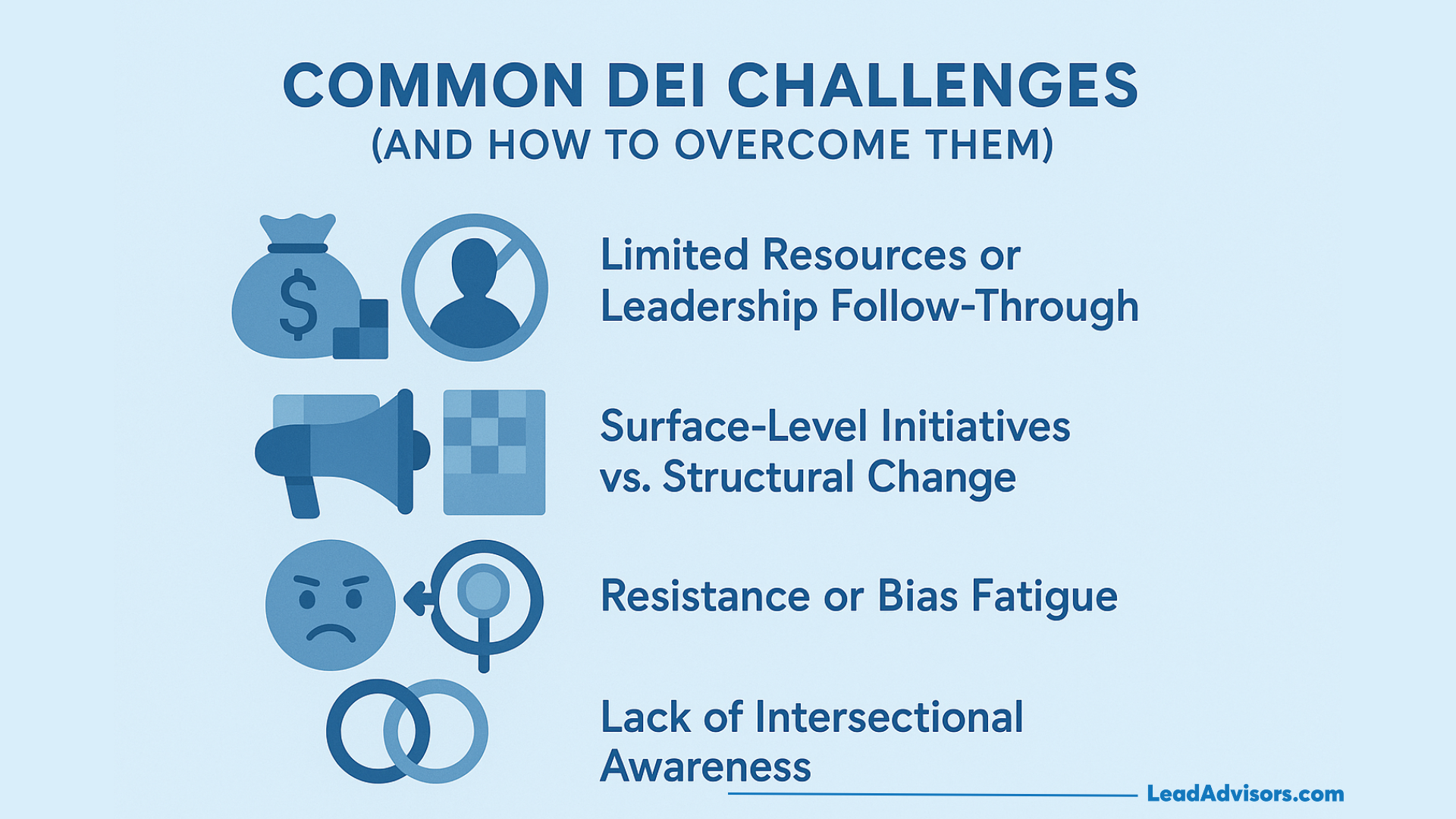
Most organizations want to get diversity and inclusion right, but even with the best intentions, things can get messy. If you really want to make progress, you have to face the tough stuff head-on and turn those setbacks into fuel for growth.
Limited Resources or Leadership Follow-Through
Let’s be real—change doesn’t stick if leadership isn’t all in. When executives treat DEI like an afterthought, nothing moves forward. Harvard Business Review says DEI efforts fall flat without visible, funded support from leaders. The fix? Make inclusion part of leadership’s core goals, tie it to their KPIs, and set aside an actual budget. When leaders are held accountable, things start to shift.
Surface-Level Initiatives vs. Structural Change
Lots of companies kick things off with posters or awareness days, but then stop there. That’s just surface-level stuff. For real change, you need to bake inclusion into how you hire, how you promote, and how you pay your people. Lyra Health puts it simply: every DEI initiative should drive real updates to policies or processes. It’s about moving from talk to action.
Resistance or Bias Fatigue
Let’s face it, not everyone’s on board right away. Some folks resist, others just get tired of hearing about bias. The only way through is with empathy and steady effort. WeWork’s DEI report points out that progress sticks when you keep learning and set clear expectations for behavior. Try small-group conversations, rotate who leads, and make a big deal out of milestones. That keeps people engaged.
Lack of Intersectional Awareness
A lot of DEI work still zooms in on just one group—maybe gender, maybe race—and ignores how identities overlap. When that happens, some people feel left out all over again. Dinasti Journal of Management found that cultures thrive when organizations weave intersectionality into training and policy. That way, you don’t leave anyone behind.
Actionable Solutions
The path forward lies in continuous education, data tracking, and leader accountability. Companies should:
- Offer ongoing, evidence-based learning opportunities to combat unconscious biases.
- Regularly collect and review diversity metrics such as representation, pay equity, and retention.
- Hold senior leaders accountable for progress through transparent reporting.
When you do this, DEI stops being just a nice idea and becomes real, lasting change. That’s how you build a workplace where everyone feels seen, respected, and ready to do their best work.
Measuring Success: DEI Metrics That Matter
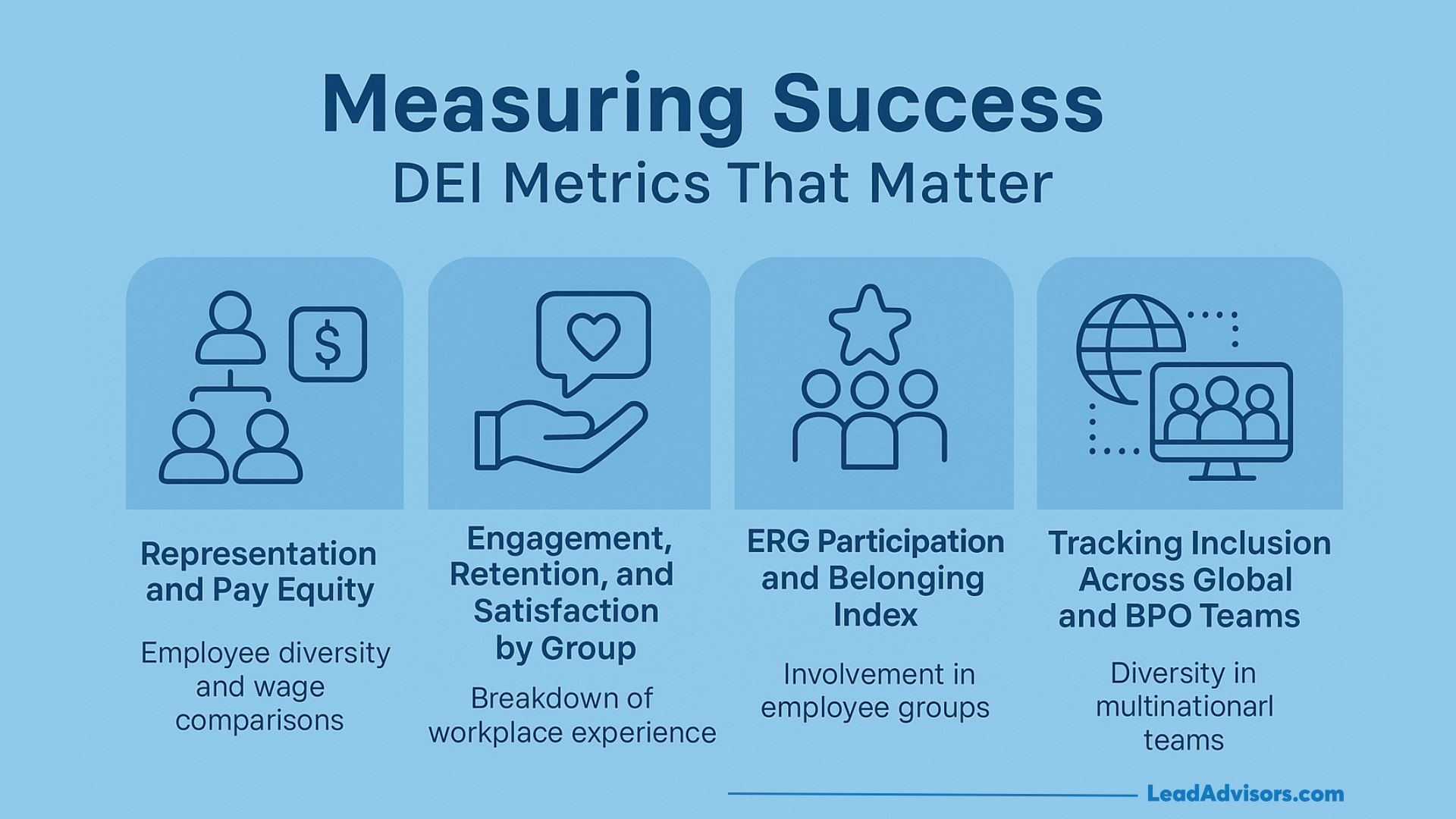
If you want to know whether your diversity and inclusion efforts are actually making a difference, you’ve got to measure what counts. Real accountability—honest, numbers-driven accountability—turns DEI from a good intention into actual progress you can see.
Representation and Pay Equity
First things first, look at who’s working at every level of your company. Don’t just check the boxes at the bottom or the top—look everywhere, from entry-level jobs to the boardroom. Harvard Business Review really stresses tracking both your current team and your qualified candidate pipeline, so you can spot where people aren’t getting a fair shot (HBR, 2023). And while you’re at it, compare pay. Make sure people with diverse backgrounds, identities, and orientations are earning fair pay for the same work.
Engagement, Retention, and Satisfaction by Group
Hiring is one thing, but what happens after people join matters just as much. Check in on how engaged people feel, how long they stay, and how satisfied they are—and break down that data by department and demographic. Lyra Health points out that when people feel like they belong, they stick around. Inclusion isn’t just a buzzword; it keeps your team together and makes them feel safe (Lyra Health, 2023).
ERG Participation and Belonging Index
How many people join ERG? Who shows up to their events, and do they feel heard? Track attendance, ask for feedback, and watch for patterns over time. Pair that with surveys—simple questions like, “Do you feel respected here?” Wharton’s research shows that when people feel like they belong, they perform better, care more, and help shape a stronger culture (Wharton, 2021).
Tracking Inclusion Across Global and BPO Teams
For global or BPO organizations, measuring inclusivity means going beyond headcounts. Evaluate:
- Representation across regions, roles, and clients.
- Cross-cultural collaboration in team projects.
- Accessibility of tools and communication platforms.
- Cultural training participation and completion rates.
These details show if remote and hybrid employees are actually part of the culture, or just dialed in from the sidelines. Dinasti International Journal recommends mixing local demographic data with global benchmarks so you can spot where things are working or falling short in each area.
Turning Data Into Action
At the end of the day, numbers don’t mean much unless you use them. Take what you learn, tweak your DEI programs, and keep building a workplace people want to be part of. Be open about your results—share them with everyone. That’s how you show real leadership and remind folks that building cultural diversity is everyone’s job, not just something for HR to worry about.
The Human Side of Inclusion: Belonging and Mental Health
There’s a real heartbeat behind diversity and inclusion initiatives at work—the people. When folks feel seen, heard, and genuinely valued, they do more than just show up. They thrive. Inclusion isn’t just a checklist or a policy on a poster. It’s about building a place where people feel safe enough to speak up, toss out new ideas, or even admit they messed up—without worrying about getting judged.
When that kind of safety exists, people open up. They share more, they work together better, and honestly, they just feel better overall. Numbers back this up. BetterUp’s “Value of Belonging at Work” study found that when employees feel like they belong, their job performance jumps by 56%. They’re half as likely to leave, and they use way fewer sick days. Lyra Health saw the same pattern—workplaces that give people space to be themselves see less burnout and stronger mental resilience, especially in high-stress fields like BPO and tech.
When inclusion isn’t just a buzzword but something you live out every day, people show up as themselves. That kind of connection doesn’t just boost company culture—it helps people feel balanced and keeps them engaged.
At LeadAdvisors, we try to make belonging part of everything we do. Flexible work, clear career paths, support for mental health—these aren’t add-ons, they’re how we work. The goal? Bring people from different backgrounds together and let them grow in a place that values who they are. When teams look out for each other, you get more than just results. You get meaning alongside momentum.
How LeadAdvisors Champions Diversity and Inclusion
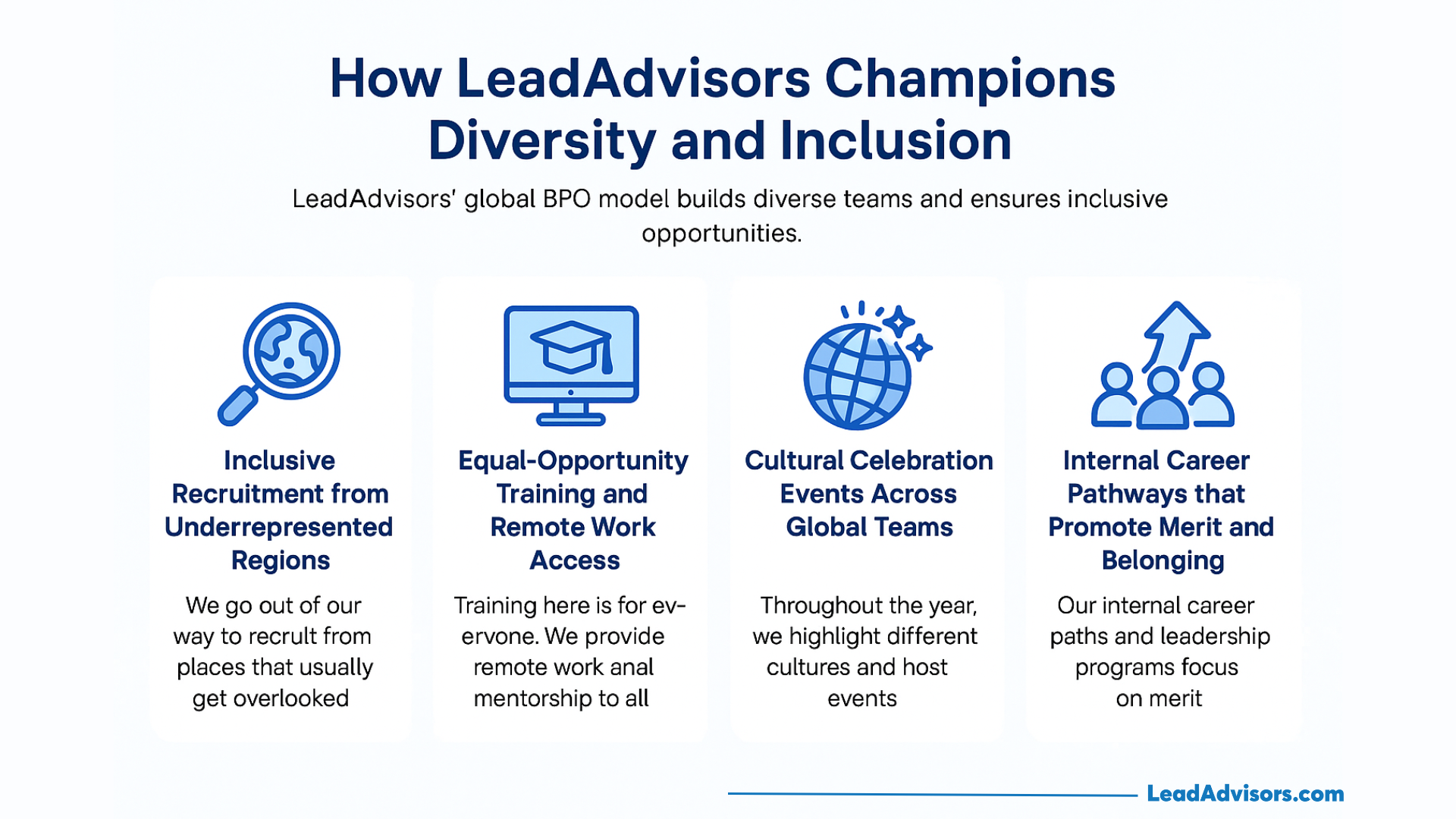
At LeadAdvisors, diversity and inclusion aren’t just words we toss around—they’re at the heart of how we work and grow. Our global BPO model helps us build teams made up of people from all walks of life, and we make sure everyone gets a fair shot to shine and really make a difference.
Inclusive Recruitment from Underrepresented Regions
We go out of our way to recruit from places that usually get overlooked. By looking beyond the usual spots, we bring in people with fresh ideas and different experiences. This keeps our projects interesting and our team dynamic.
Equal-Opportunity Training and Remote Work Access
Training here is for everyone. We set up equal-opportunity programs that help people learn and move forward, no matter where they’re located. Whether you’re in the US or halfway across the world, you get access to tools, remote work, and mentorship. Everyone has a chance to feel supported and grow.
Cultural Celebration Events Across Global Teams
We don’t just work together—we celebrate together. Throughout the year, we highlight different cultures and host events that bring people together, even across continents. These moments help everyone feel seen, appreciated, and connected.
Internal Career Pathways that Promote Merit and Belonging
Moving up at LeadAdvisors doesn’t depend on where you’re from. We focus on merit. Our internal career paths and leadership programs give everyone a real chance to advance and find their place here.
All these efforts show how seriously we take diversity and inclusion. They spark innovation, build strong relationships, and make our workplace richer and more collaborative.
If you want to join a team where every voice matters, check out careers at LeadAdvisors. Help us shape a company that’s as diverse and inclusive as the world we live in.
Frequently Asked Questions
What is diversity and inclusion in the workplace?
Why is diversity and inclusion important in the workplace?
How to promote diversity and inclusion in the workplace?
How to measure diversity and inclusion in the workplace?
How to improve diversity and inclusion in the workplace?
Final Thoughts: Diversity as the Engine of Innovation
Let’s be real—diversity and inclusion aren’t just boxes to check. They’re what make companies stronger, more creative, and ready to grow. Harvard Business Review backs this up: teams that welcome different perspectives are way more likely to break into new markets and grab a bigger piece of the pie. When you bring together people with different backgrounds, you get fresh ideas, smarter problem-solving, and a workplace that actually clicks.
At LeadAdvisors, we see it every day. Our teams come from all over, and that mix of voices keeps us sharp and driven. Our approach to BPO isn’t just about getting the job done; it’s about giving everyone a genuine opportunity, fostering growth, and celebrating what makes each of us unique.
If you’re a business leader, team up with LeadAdvisors BPO Solutions. Build teams that aren’t just diverse but truly high-performing. And if you’re looking for a place where you can be yourself and actually grow, check out LeadAdvisors Careers. Here, you’ll find people who get it—who want you to belong and succeed.



